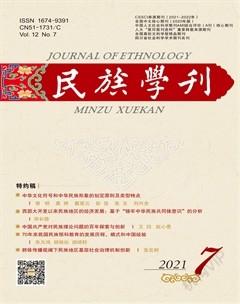The Development, Model, and Experience of China
Zhu Weihong, Hu Bingxian, Hu Qixuan
DOI:10.3969/j.issn.1674-9391.2021.07.004
Abstract:The preparatory education for ethnic minorities is a characteristic form of higher education set up for the training of top talents in ethnic minorities and ethnic minority areas. It is committed to cultivating more talents in remote and impoverished ethnic minority areas. Meanwhile, the preparatory education for ethnic minorities is of great significance for implementing the CPC's ethnic policy and promoting common prosperity and development of all ethnic groups.
Over the past 70 years, under the care of the Party and the state, ethnic preparatory education has undergone continuous reform and development, and has formed a series of standardized educational operating systems, including enrollment of students, curriculum and teaching materials, student management, teaching guarantee, ideological and political education, etc. It has formed a multiform and multilevel education system and has become an important part of the higher education system with Chinese characteristics. This article reviews the history of the reform and development of China's preparatory education for ethnic minorities over the past 70 years as well as its innovations in training models. On this basis, it discusses the great achievements and/or experiences of the preparatory education for ethnic minorities in China.
Since the founding of the People's Republic of China, ethnic preparatory education has been going through four stages: preliminary development, stagnant development, independent development, and diversified development. In the last 70 years, the preparatory education for ethnic minorities has become an important part of the ethnic education system with Chinese characteristics, and a successful platform for the Party's ethnic policy using a variety of innovative training modes. For instance, the Guangxi model focuses on preparatory tutoring and mainly teaching students in the same location, and ensuring equal educational opportunities for impoverished ethnic minorities in rural areas. It also insists on unified teaching and management and teaches students to follow their aptitude and attach importance to reform. Whereas the Inner Mongolia model concentrates on decentralized school management, striving to build an education system of “preparatory and undergraduate coupling” and to continuously strengthen its educational evaluation. There is also a Xinjiang model which started in the 1950s and it focuses on supplementary tutoring and the emphasis on languages. Xinjiang colleges and universities generally adopt a supplementary study of the commonly spoken and written language in China, complemented by other basic culture courses. Currently, the preparatory education for ethnic minorities has formed an ethnic preparatory education system with Chinese characteristics and has trained a large number of ethnic minority talents. It has become a golden bridge to train top talents of ethnic minorities.
Key Words: ethnic preparatory education; reform and development; multi-modes ; Chinese experiences

